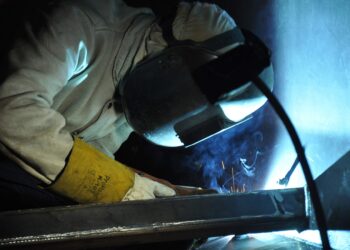The legacy of socialist architecture in Central and Eastern Europe (CEE) is a subject of enduring fascination and debate. Spanning several decades of the 20th century, this architectural style is an indelible part of the region’s urban landscape, embodying the political, social, and aesthetic ideologies of its time.
Socialist architecture, often referred to as „Brutalist” for its raw, imposing designs, was more than just a style; it was a manifestation of the socialist agenda. It aimed to represent the ideals of socialism – equality, collective living, and the supremacy of the state – through its monumental scale, functionality, and utilitarian approach.
One of the most iconic examples of socialist architecture is the Palace of Culture and Science in Warsaw, Poland. Gifted by the Soviet Union and completed in 1955, it was designed to symbolise the friendship between the Polish and Soviet peoples. Standing at 237 metres, it was the tallest building in Poland and a striking example of Soviet-style architecture, combining elements of Polish historicism and Soviet monumentalism.
In Prague, Czechia, the Zizkov Television Tower, completed in 1992 just after the fall of communism, reflects the later phase of socialist architecture. Its futuristic design, marked by a distinctively high-tech appearance, was a departure from earlier, more classical approaches and signalled a transition in architectural styles post-socialism.
Bulgaria’s Buzludzha Monument is another remarkable example. Built in 1981 to commemorate the founding of the Bulgarian Socialist Movement, the structure’s unique saucer-like design and grandiose scale make it a notable, albeit controversial, landmark.
Despite its grand ambitions, socialist architecture in CEE is often critiqued for its lack of human scale and disregard for historical context. Many buildings were constructed with poor-quality materials, leading to deterioration over time. This has posed a challenge in terms of preservation and maintenance, as some see these structures as bleak reminders of a repressive regime, while others view them as important historical artefacts.
In recent years, there has been a renewed interest in this architectural legacy. Movements to preserve socialist-era buildings are gaining momentum, driven by a recognition of their cultural and historical significance. Efforts to repurpose these structures for modern use are underway, reflecting a contemporary appreciation of their unique aesthetic and historical value.
For instance, in Berlin, the former Stasi headquarters, once the base of the East German secret police, has been transformed into a museum, offering insights into the history of East Germany. In Slovakia, the inverted pyramid design of the Slovak Radio Building in Bratislava is celebrated as an architectural marvel, despite its socialist origins.
The legacy of socialist architecture in CEE is a complex tapestry woven from historical, political, and aesthetic threads. Today, as the region continues to grapple with its socialist past, these architectural landmarks stand as physical manifestations of a bygone era, offering a window into the ambitions and contradictions of socialist rule. Their preservation and reinterpretation are not just about saving buildings but about understanding and coming to terms with a significant chapter in the region’s history.






